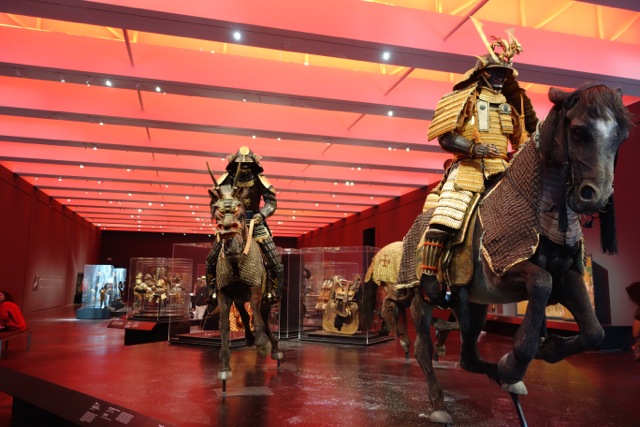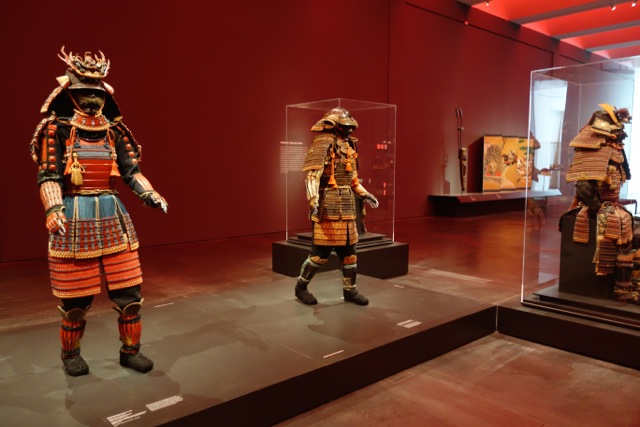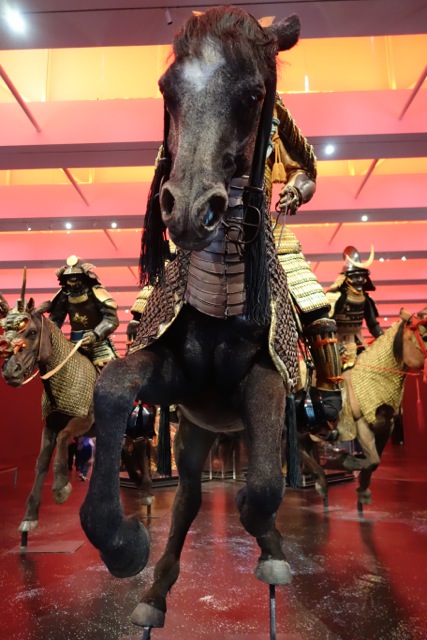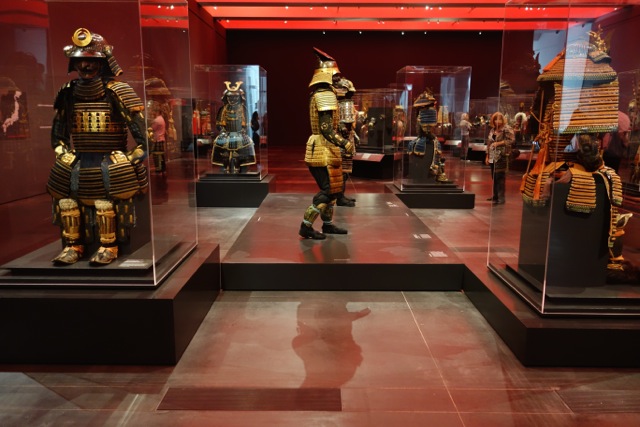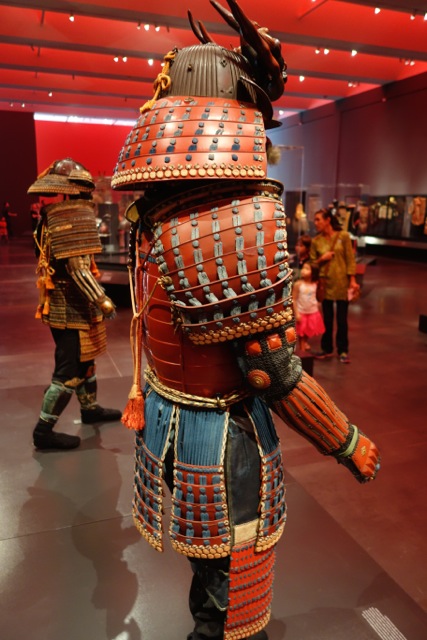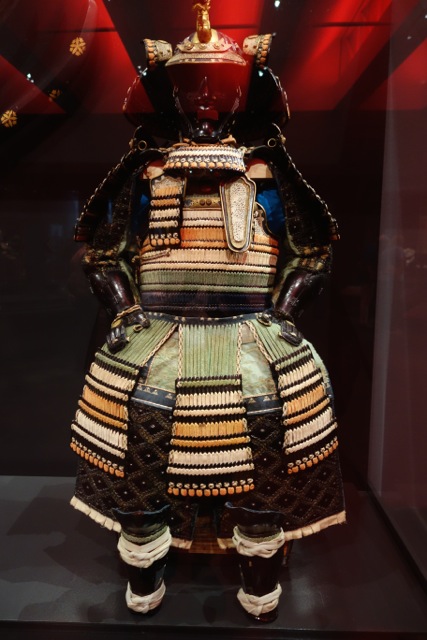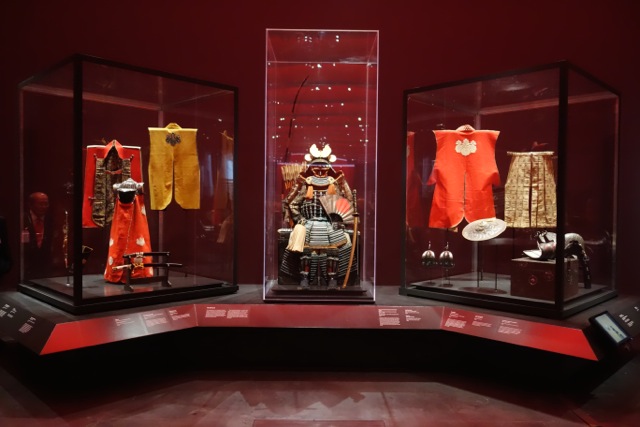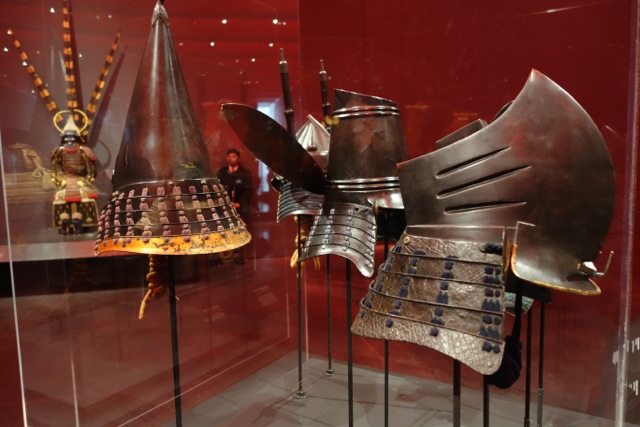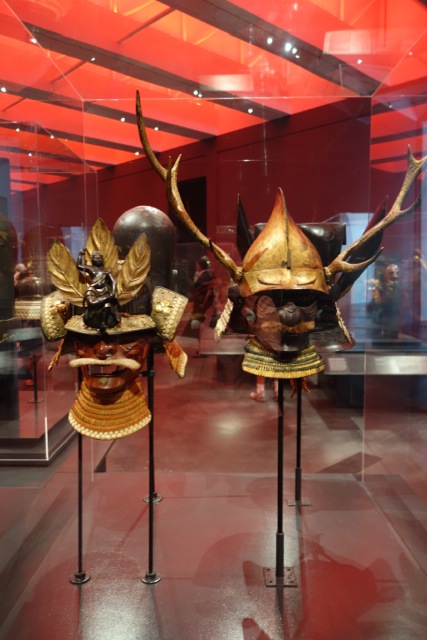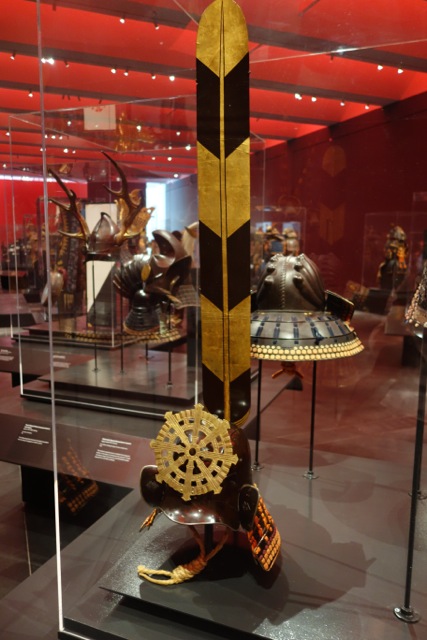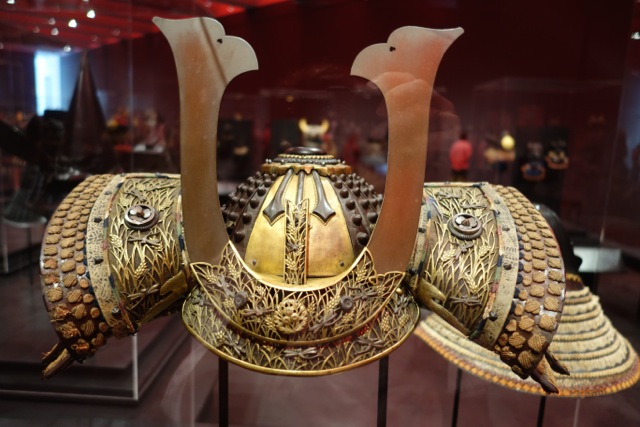A Must-See for Everyone Over the Holidays
The second you step into Samurai: Japanese Armor from the Ann and Gabriel Barbier-Mueller Collection, LACMA’s terrific new show, you feel the energy of the legendary warriors. Horses with fully armored samurai mounted atop greet you in full gallop pose, and the stunning red and yellow lighting sets the mood for what can only be called historical romance. The samurai era was but momentary but the legend of the warriors lives on, expressed through the highly stylized armor and helmets and with a sense of pageantry and style that is clearly made for literature and film.
We’ve got suggestions for ways to engage with the history, literature, and film, but first — we were lucky to have a private tour with LACMA curator and department head Robert T. Singer, whose passion for this collection (and all things Japanese) was infectious. He spent an hour with us, but clearly could have spent ten hours talking about this exhibition.
The exhibit is up until February 1, 2015. Make a date to bring everyone to see this fun show over the holidays. Fair warning, there are not as many swords as suits of armor… but the lure of the samurai is strong and the artistry and personalization of the armor will satisfy anyone who visits. As Mr. Singer says “In every man there is a samurai waiting to come out!”
The Samurai exhibit contains battle gear worn by Japanese warriors from the 12th through the 19th centuries. The items in the exhibition were collected by a family from Dallas who has amassed one of the most comprehensive private holdings of samurai armor in the world, but across campus in the Japanese Pavilion is a companion show with items from other collections, including LACMA’s own. Head first to this exhibition in the Resnick Pavilion, which features more than 140 objects of warrior regalia, including eighteen full suits of armor, elaborate helmets and face guards, and life-size horse-clad armors that depict the samurai in all their glory. (See details about the second show below).
What’s remarkable is that visitors can get up very close to the items and see the workmanship that went into their creation. Truly beautiful beading, metalwork, feathering and stitches abound and we also learned that this armor was usually about 45 pounds, and that most of the time the samurai never actually wore the costumes. Indeed, the samurai system was so functional that most samurai spent their days contemplating music, art, calligraphy and painting; they played board games and studied the arts while waiting to actually be called to battle. Not a bad job for militia.
The term “samurai” comes from the verb saburafu, which means “to serve by one’s side.” Initially, samurai were armed servants but as time went on, they became experts in warfare, — soldiers loyal to landowning lords who battled each other under 700 years of military led government, know as the shogun era.
The intact suit of armor pictured below belonged to one family and is a rare chance to see every bit of the full costume of the warrior.
Later, during the Meiji Restoration, the emperor regained power and the samurai class was dissolved. However, it’s hard to give up the hard-earned reputation of valor in battle and samurai families continued creating new armor for ceremonial purposes and indeed their family reputation rested on the glory of their glorious ancestors.
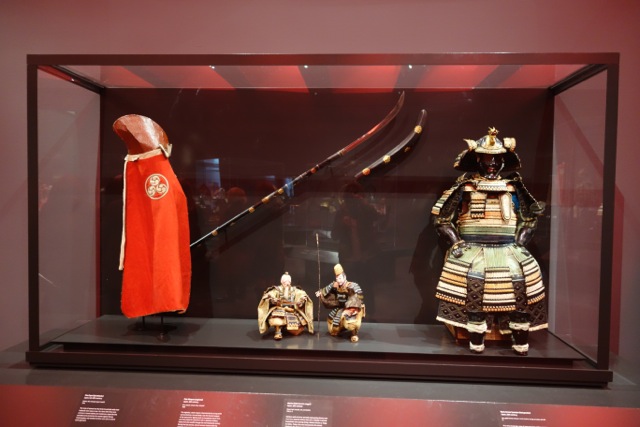
Just imagine wielding a sword or riding a horse while wearing all these bits of heavy armor! Kids will enjoy finding a set of armor for a boy and, we learned from the Head of Japanese Art at LACMA, Bob Singer, that the red cape on the left (above) belonged to a female samurai and protected her from fire — fire being the most feared thing of all in a culture where most houses were made of wood, and one fire could destroy a whole neighborhood. Yes! There were female samurais, and although there aren’t a lot of swords in this show, the blade below was swung by women warriors and has 32,000 layers of steel.
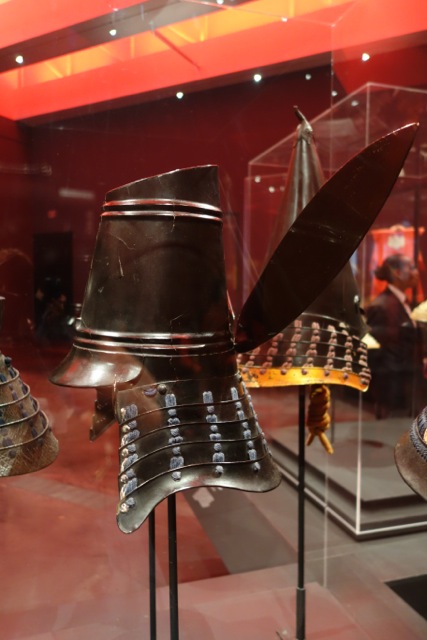
If visitors can get past the dearth of swords and weapons in this show, they can focus on the terrific artistry of the costumes and the personalization that went into each helmet. The collector was apparently interested in helmets as sculpture, and the show is replete with amazing headgear. Look for helmets that look like animals (primarily from the zodiac) but including hawks, elk, and rabbits — and dragons. Lots of dragons! But we really loved the more unusual helmets that depict a bamboo stalk cut off with leaves on the neck, an ax head, and surprisingly – an eggplant! It turns out that eggplants were harbingers of good fortune and were considered a very lucky symbol.
Film and Literature Connections
We know you’re going to be inspired to learn more about the samurai before (or after) you see the show. Parents can begin with James Clavell’s novel “Shogun” from 1975, which chronicled the rise of one of the daiymo families and became an international bestseller by 1980, greatly influencing Western understanding of Janaese history and culture, and was adapted into a fairly decent miniseries with Richard Chamberlain playing the English sailor who witnesses the rise of the shogunate.
And then, of course, there are the many films about samurai. There are hundreds, so where to begin? Every single critic lists Seven Samurai at the top. The film is widely considered to be revered director Akira Kurisowa’s masterpiece, a piece of art that exerted significant influence on American culture – from the western genre, to the inspiration for Star Wars, to A Bug’s Life. The film has a 207 minute running time, subtitles, and was shot in black and white. The Criterion Collection released a remastered version of the film in 2010.
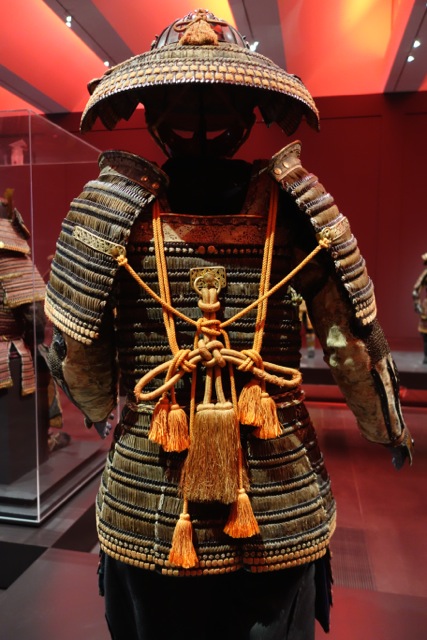
Here is a Common Sense review, which recommends the film for kids over 13. It is a violent film, and yet the point of the story, per the genre, is duty and man’s role in society.
Younger kids can begin with anything by our favorite Japanese anime director, Hayao Miyazaki: from Spirited Away, to Princess Mononoke, to Howl’s Moving Castle, to The Wind Also Rises. Copies of Miyazaki’s films are available for purchase in the exhibition gift shop, which also has an excellent selection of books and manga that go along with the theme.
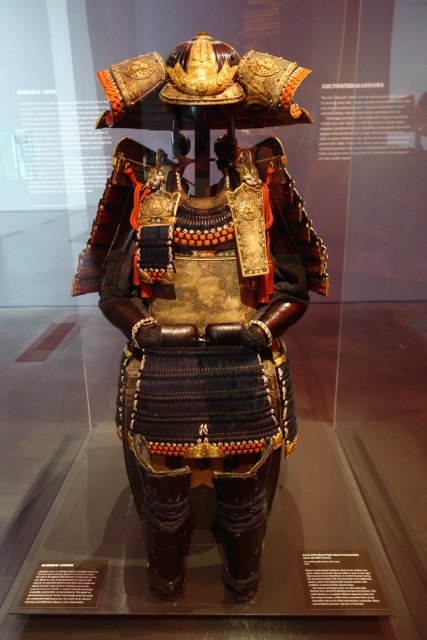
For those who’ve mastered the Seven Samurai, here’s the British Film Institute’s Top Ten, for good measure. [Some critics give The Last Samurai (with Tom Cruise) high-marks for historical accuracy and visual splendor, FYI.]
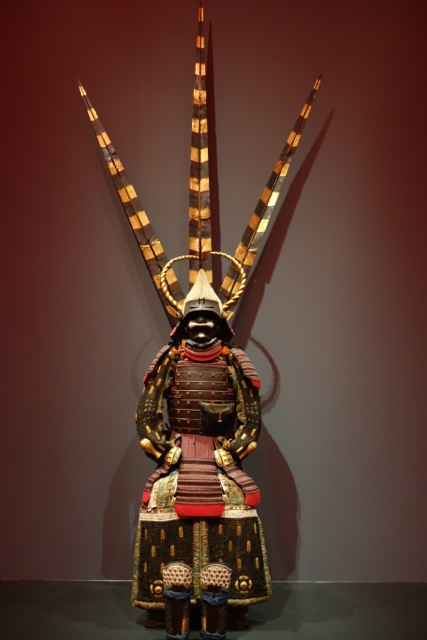
Art of the Samurai: Swords, Paintings, Prints, and Textiles showcases samurai swords and examines the warrior lifestyle and is on display in the Japanese Pavilion through March 2015, where visitors can also find a presentation of swords, sword fittings, and other weaponry from local collections, as well as an array of color woodblock prints depicting warriors in battle will be on view as well as a selection of garments worn by samurai and their wives from the LACMA collection.

